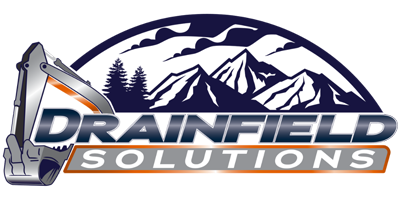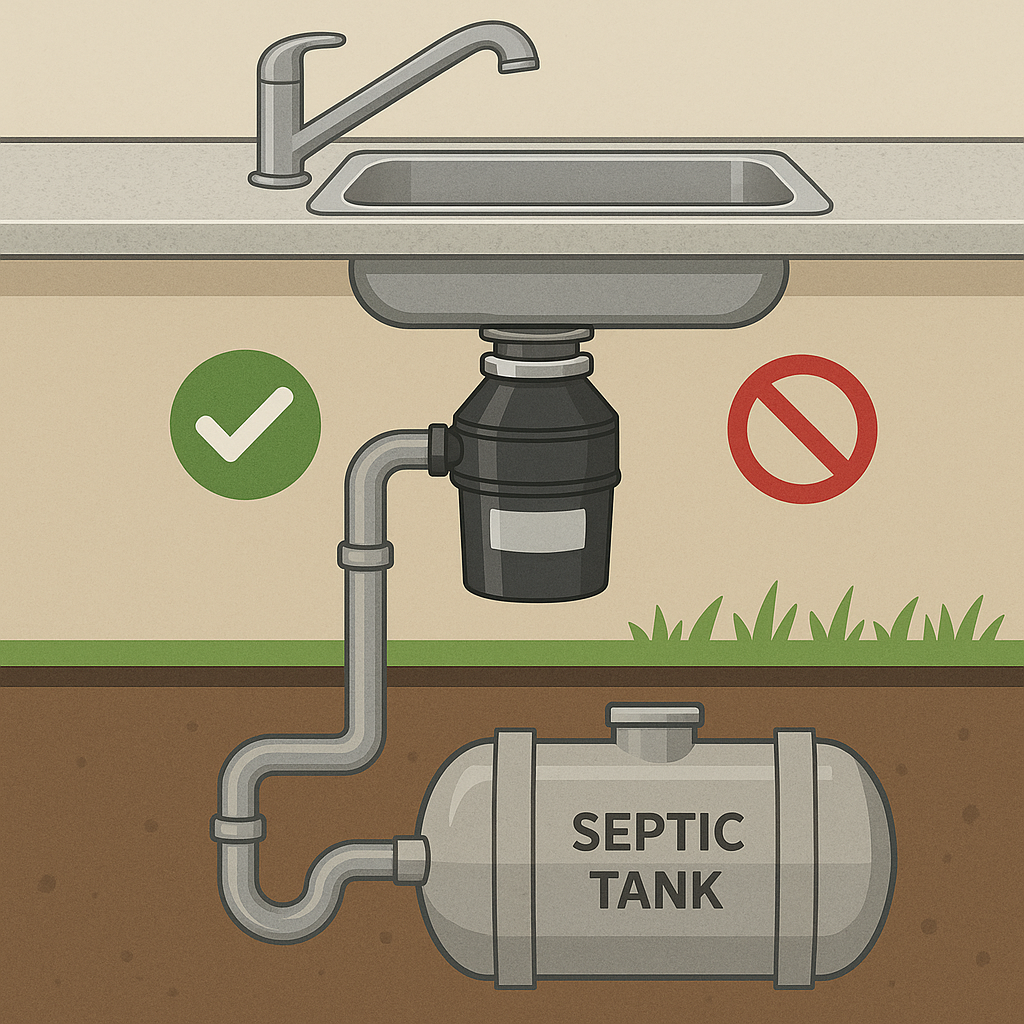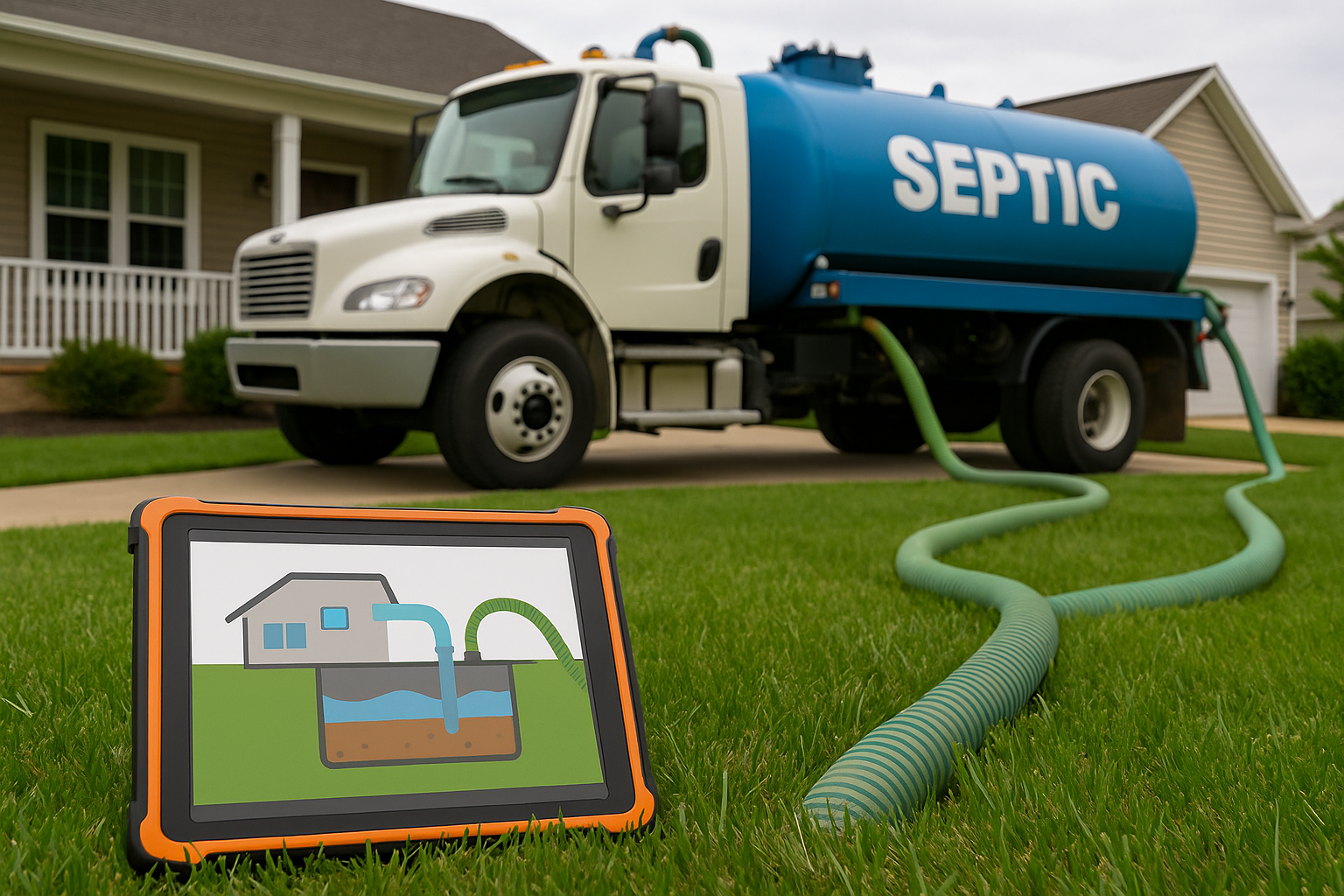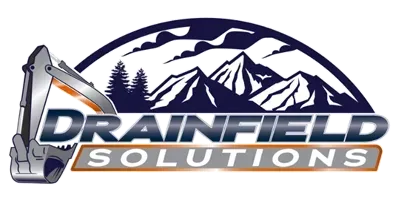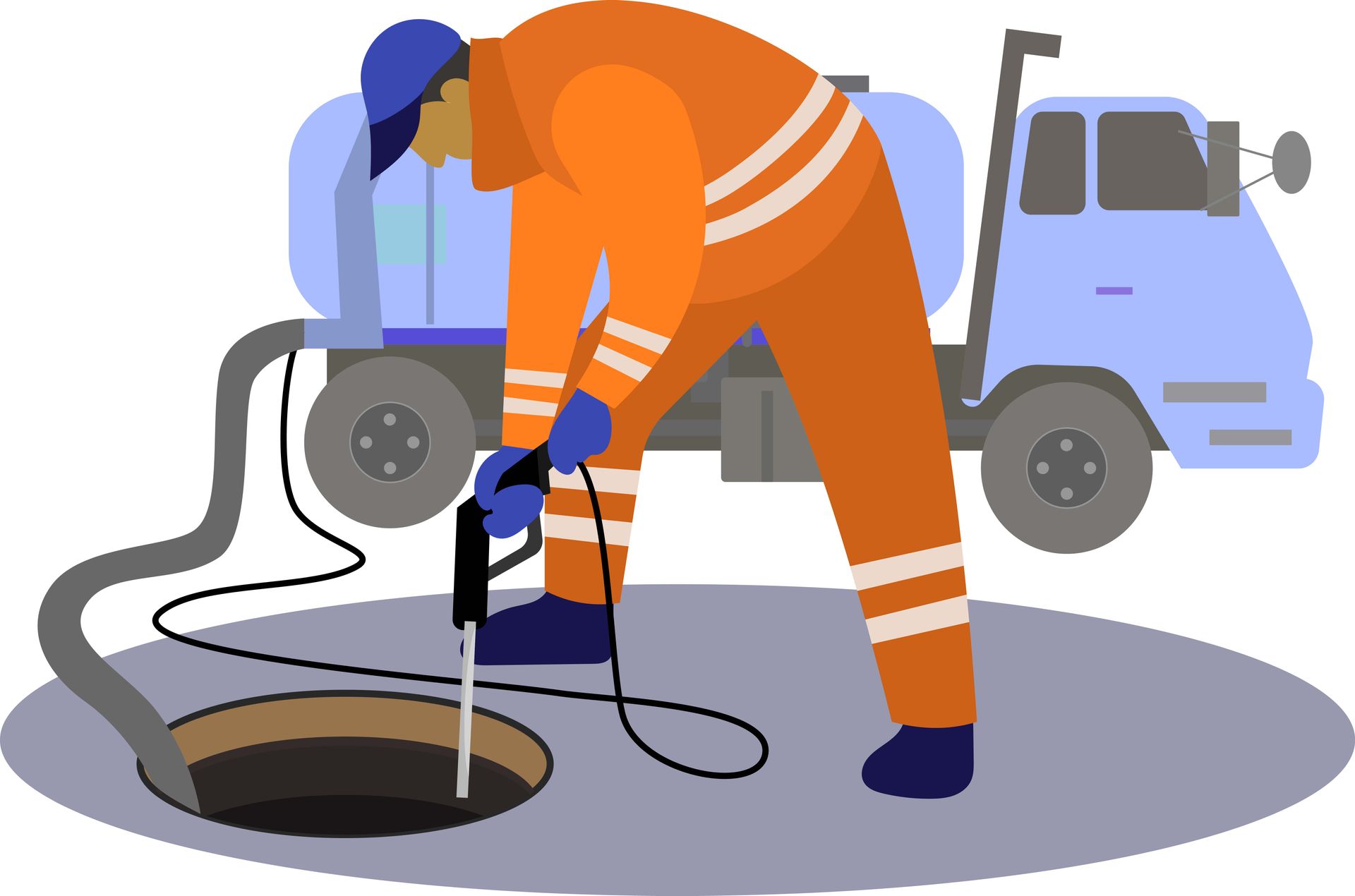
DIY Septic Maintenance vs. Hiring a Pro: What Central Virginia Homeowners Need to Know
March 16, 2025
Maintaining your septic system isn’t just a chore—it’s a critical part of protecting your property, your wallet, and your health. But if you’ve ever wondered whether it’s smarter (or cheaper) to grab your gloves and go DIY or leave it to the pros, you’re not alone. This decision stumps many Central Virginia homeowners.
Let’s break it down: DIY septic care might look like a money-saver on the surface, but a single mistake can cost thousands in repairs or even require a full system replacement. On the flip side, hiring professionals means peace of mind, safety, and long-term savings—but at a price.
In this guide, we’ll explore how septic systems work, what maintenance really involves, and the pros and cons of going DIY versus calling in experts like Drainfield Solutions.
🤔How Does a Septic System Work?
Before we compare your options, here’s a quick refresher on what’s underground:
- Septic Tank: This is where all the wastewater from your home goes first. Solids settle into sludge at the bottom while oils and scum float on top. The middle layer (effluent) flows out to the next stage.
- Drainfield (Leach Field): The effluent travels into the drainfield, where it's naturally filtered by the soil before reentering the environment.
When working properly, your septic system is out of sight, out of mind. But if maintenance is skipped or done incorrectly, you’ll know fast—think foul odors, slow drains, soggy yards, and even sewage backups.
What’s Involved in Septic System Maintenance?
Maintaining your system isn’t just about pumping the tank every few years. It includes:
- Routine inspections (to catch minor issues early)
- Regular septic tank pumping (every 3–5 years, depending on household size and usage)
- Monitoring for leaks, backups, or drainfield saturation
- Avoiding harmful substances going down your drains (like grease, bleach, or non-biodegradables)
- Ensuring compliance with local environmental and health regulations
Some of this you can do on your own. But most of it? You really shouldn’t.
DIY Septic Maintenance: Pros and Pitfalls
Many homeowners are drawn to the idea of DIY for one big reason: saving money. And it’s true—there are a few maintenance habits you can handle yourself. But there are also serious risks that come with getting too hands-on.
✅ Pros of DIY Septic Maintenance:
- Cost Savings: You can avoid service fees for minor tasks.
- Convenience: You’re on your own schedule—no waiting for a technician.
- Control: You get to oversee what’s happening with your system (which is great… if you know what you’re doing).
❌ Cons of DIY Septic Maintenance:
- Health Hazards: Septic tanks contain harmful bacteria and toxic gases like methane. Without the right safety equipment, exposure can be dangerous.
- Incomplete Work: You might miss sludge buildup, leaks, or early signs of drainfield failure.
- Risk of Damage: Mishandling components can lead to cracks, pipe blockages, or broken baffles—costly issues to fix.
- Legal and Regulatory Risks: Local laws may require certified technicians for inspections, pumping, and certain repairs.
Bottom line: simple habits like using water efficiently and avoiding chemical cleaners? ✅ Go for it. Attempting a septic pump-out with a rented truck? ❌ Better not.
Why Professional Septic Maintenance Is Worth It
You might be handy with a wrench or savvy with YouTube tutorials, but septic systems aren’t your average DIY project. Here’s why professional septic services—especially from trusted local experts like Drainfield Solutions—are often the smarter, safer choice.
✅ Advantages of Hiring a Professional
- Specialized Equipment and Expertise - Pumping out a septic tank isn’t something you can do with a shovel and a shop vac. It requires commercial-grade vacuum trucks, inspection cameras, safety gear, and—most importantly—knowledge of how to use it all without causing damage.
- Comprehensive Inspections - Trained technicians don’t just pump the tank—they inspect the inlet and outlet baffles, assess sludge and scum levels, check for backflow, and identify small issues before they escalate into major failures.
- Legal Compliance - Virginia’s health department has specific regulations for septic inspections and maintenance. Professionals ensure your system stays compliant, protecting you from fines, permit violations, and liability.
- Accurate Problem Diagnosis - Not all septic problems are obvious. Professionals can spot subtle signs of trouble—like a soggy patch near the drainfield or unexpected tank pressure—that DIYers might miss entirely.
- Peace of Mind - No guesswork. No risky experiments. Just experienced care and long-term system health. It’s a comfort that’s hard to put a price on—especially when you’re staring down the barrel of a potential $10,000+ drainfield replacement.
💸 DIY vs. Professional: Cost Comparison
It’s natural to compare dollars and cents. Here’s a realistic breakdown of what you might expect to spend:
| Service Type | DIY Cost (if possible) | Professional Cost (Avg.) |
|---|---|---|
| Monthly Bacterial Additives | $15–$30 | Included in some plans |
| Septic Tank Pumping | Not DIY-friendly | $300–$500 |
| Annual System Inspection | DIY visual only | $100–$250 |
| Emergency Repairs (DIY risky) | Often makes things worse | $500–$3,000+ |
| Drainfield Replacement | Caused by neglect | $5,000–$15,000+ |
Short-term DIY savings can lead to long-term professional bills. Think of it like skipping oil changes in your car—sure, it’s cheaper now, but when the engine blows? Not so much.
🚨 When to Call a Professional (No Exceptions)
Even if you’re a die-hard DIYer, there are times you absolutely must call in an expert:
- Foul odors in or around your home
- Slow drains throughout the house
- Standing water or wet spots near the drainfield
- Sewage backup in toilets, tubs, or sinks
- Time for routine pumping or inspections
- Buying or selling a home (real estate septic inspections are required)
In short, if your system is more than a few years old or showing any signs of trouble, it’s time to bring in someone who does this for a living.
Should You Really DIY Your Septic Maintenance? Here’s the Bottom Line
Let’s cut to the chase. If you’re still wondering whether septic system maintenance is a DIY-friendly task or a job for seasoned pros, here’s your answer:
👉 You can do a few small things yourself—but the heavy lifting should always be handled by professionals. Trying to DIY your way through septic problems is like performing dental work with a butter knife. You might get lucky—but you’re far more likely to cause serious damage (and pay for it later).
🧠 Smart DIY: What You Can Safely Do Yourself
Before we scare you away completely, know this: Homeowners can take meaningful steps to support their septic system between service visits. Think of it as brushing your teeth between cleanings—not a replacement, but definitely helpful.
Here are a few safe, proactive ways to maintain your system:
- ✅ Practice water conservation to avoid overloading the tank.
- ✅ Space out laundry loads throughout the week.
- ✅ Use septic-safe toilet paper and biodegradable cleaners.
- ✅ Keep a septic logbook with maintenance records.
- ✅ Schedule regular inspections and pumping—and stick to the schedule.
🤯 Risky DIY: What You Should Never Attempt Yourself
If it requires opening the tank, inspecting components underground, or diagnosing clogs in the drainfield—stop right there. Here’s what’s off-limits for non-pros:
- ❌ Pumping the septic tank
- ❌ Inspecting baffles, filters, or sludge levels
- ❌ Digging around or accessing the drainfield
- ❌ Using septic “shock” treatments or harsh chemicals
- ❌ Installing or replacing system components
These jobs demand technical know-how, specialized tools, and in some cases, permits from the Virginia Department of Health.
👷 Why Virginia Homeowners Trust Drainfield Solutions
Serving Central Virginia and beyond, Drainfield Solutions has earned a reputation for expertise, honesty, and responsive service. We’re not just here to pump tanks—we’re here to help your entire septic system last as long as possible.
What makes us different?
- Licensed and insured technicians
- Comprehensive maintenance plans tailored to your needs
- Timely reminders so you never miss a service
- Emergency septic repairs available 24/7
- Transparent pricing with no surprise fees
We’re based right here in the community and treat every job like we’re working on our neighbor’s home—because we probably are.
✅ Final Verdict: Leave the Dirty Work to the Pros
If you’re still tempted to DIY, remember this:
A septic system is not just a tank in your backyard—it’s a complex, living ecosystem that protects your home, your health, and your property value.
Taking shortcuts can lead to long-term regrets.
Let the pros at Drainfield Solutions keep things flowing smoothly—so you can enjoy peace of mind and a problem-free home.
📞 Ready to Schedule Service?
Call Drainfield Solutions at [804-633-1808] or Request Service Online to book your next septic inspection, pumping, or repair. We proudly serve residential and commercial properties throughout Central Virginia—including Caroline County, Spotsylvania, Fredericksburg, King George, and more.
🔗 Helpful Resources
- Virginia Department of Health: Septic System Maintenance Guidelines
- EPA SepticSmart Homeowner Resources
Frequently Asked Questions About Septic Maintenance in Virginia
Share Post
Latest Posts
Ready to Take the Next Step?
Whether you're in need of a system inspection or regular maintenance, Drainfield Solutions is here to help. Get in touch today for reliable service you can trust.

